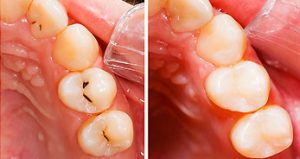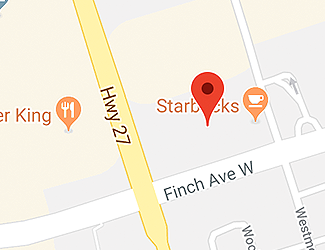
Inlays and Onlays
Inlays and onlays are types of indirect fillings – fillings that are not directly molded onto the area to be covered but are instead fabricated in a laboratory before being bonded to the tooth. They are used when the tooth decay has already gone worse than what can be solved by traditional fillings, but is not bad enough for a crown to be needed. The type of filling to be used is determined by the extent and location of the decay on the surface of the tooth.
Should I get a direct filling, an onlay, an inlay or a crown?
When the decay results to a hole on the tooth, a filling is used to cover it. If the decay has gotten so severe that it has damaged the entire top portion of the tooth, a crown will be used to restore it. However, if the decay is bigger than a hole and affects the chewing surface or the center of the tooth’s surface surrounded by the cusps, an inlay will be the best solution. However, an onlay, which is sometimes called a partial crown, is needed if the decay affects one or more cusps of the tooth.
If a filling is used on an area that is bigger than a hole, it can weaken the structure of the tooth and can lead to the tooth breaking or cracking. However, if a crown is used to cap a hole that does not affect the whole chewing surface, it can remove more tooth surface than needed.
Inlays and onlays last longer than traditional fillings because they are made out of porcelain or tooth-colored composite resins while traditional fillings only use glass or resin ionomers. Moreover, inlays and onlays do not react to extremely hot or cold temperatures. Traditional fillings tend to enlarge or shrink depending on the temperature and can therefore affect the strength and structure of the tooth. Inlays and onlays are the opposite. They can actually reinforce the damaged tooth by around 75%. Compared to crowns, inlays and onlays do not require the tooth to be filed or shaped and the patient does not end up losing more tooth structure.
There are actually several types of inlays and onlays that depend on the type of material used. Gold is the best option because they last the longest. However, they are not as aesthetically pleasing as the ones made out of porcelain or tooth-colored resin. Though most inlays and onlays are made out of porcelain, a cheaper option is available in the form of a composite. However, it will not last as long as a porcelain one.
How are inlays and onlays placed?
Just like crowns, inlays and onlays are fabricated in a dental laboratory and will thus need more than one visit to the dentist. On the first visit, the decay in the tooth will be removed. An impression of the tooth will then be taken and sent to the dental laboratory. While waiting for the permanent inlays or onlays, a temporary filling is used to seal the hole. On the second visit, the inlays or onlays will be placed using a bonding material. The surfaces of the tooth will be filed to make sure that the tooth makes full contact when the patient bites.
How do I take care of my inlays or inlays?
Taking care of your inlays or onlays require the same care as regular teeth. Regular brushing, flossing and visits to the dentist will help make them last even up to 30 years.







